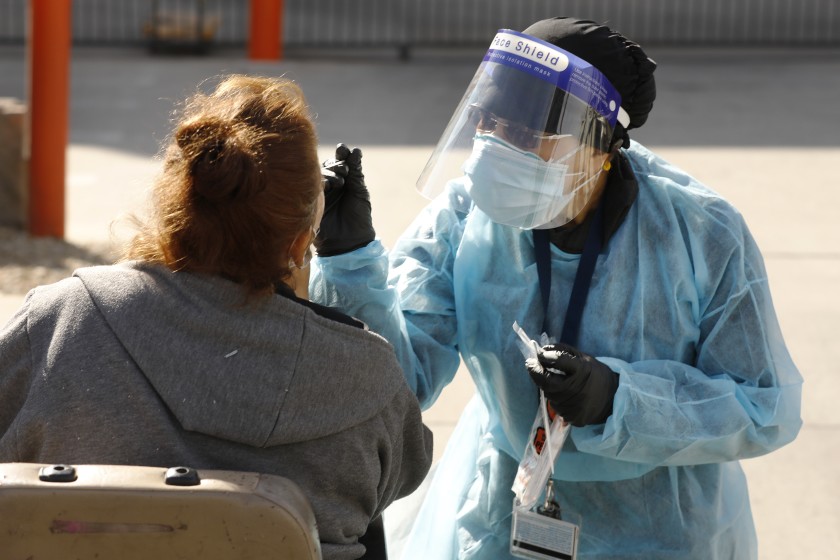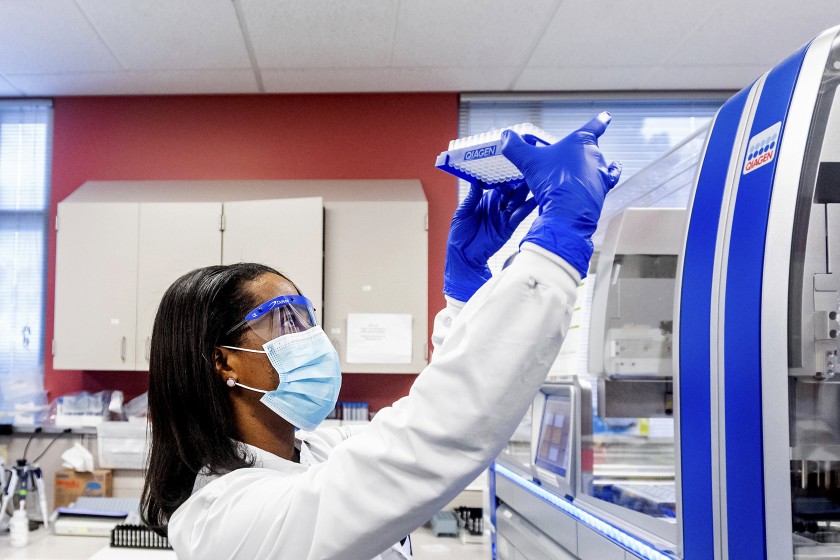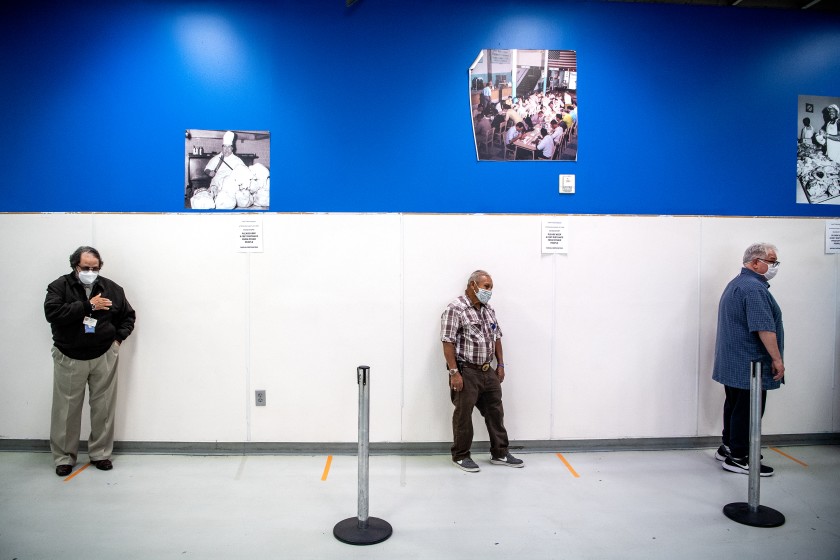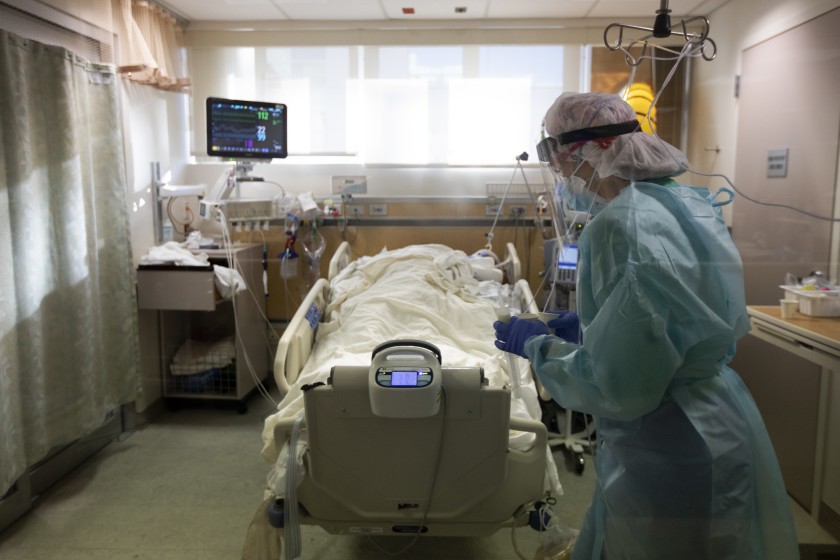Let’s get the vaccine into the arms of white liberals, blacks, and Hispanics, then mandate that white Republicans engage in indoor dining, concert-going, bar-hopping, and cruises.
you’d be surprised how many people live comfortably in the 80s, and how many people with covid feel like they’re ok with spo2s in the 80s.
Your strategy is probably superior unless you’re really far. Most people have at least 6 hrs before they start to feel something, probably more. If you get a reaction you’re almost certainly going to feel worse day after, than day of.
If Florida is in your radius, that’s probably your best bet.
MA opening elementary schools full time
by April per governor edict
Anyone read up on the Cali variant? B.1.427/B.1/429 seems like a real spring treat.
The clinic in WA state where I got my vaccine said that they were able to do the walk in vaccine clinic because they’re now getting shipments of vaccines direct from the federal government, whereas before it was only coming from the state. So, Biden policies working?
I don’t want to body shame, but Meghan McCain may be eligible for the vaccine based on her weight.
Yeah I read this article twice and still can’t figure out why THE DEVIL IS ALREADY HERE ZOMG EVERYONE PANIC WE’RE ALL GOING TO FUCKING DIE!!!
A coronavirus variant that probably emerged in May and surged to become the dominant strain in California not only spreads more readily than its predecessors, but also evades antibodies generated by COVID-19 vaccines or prior infection and is associated with severe illness and death, researchers said.
In a study that helps explain the state’s dramatic holiday surge in COVID-19 cases and deaths — and portends further trouble ahead — scientists at UC San Francisco said the cluster of mutations that characterizes the homegrown strain should mark it as a “variant of concern” on par with those from the United Kingdom, South Africa and Brazil.
Californians, along with the rest of the country, have been bracing for an onslaught of the more transmissible strain from the U.K. known as B.1.1.7. But they should know that a rival strain that is probably just as worrisome has already settled in, and will probably account for 90% of the state’s infections by the end of next month, said Dr. Charles Chiu, an infectious diseases researcher and physician at UCSF.
“The devil is already here,” said Chiu, who led a team of geneticists, epidemiologists, statisticians and other scientists in a wide-ranging analysis of the new variant, which they call B.1.427/B.1.429. “I wish it were different. But the science is the science.”
Newsletter
Get our free Coronavirus Today newsletter
Sign up for the latest news, best stories and what they mean for you, plus answers to your questions.
You may occasionally receive promotional content from the Los Angeles Times.
The U.K. and California variants are each armed with enhanced capabilities, and the likelihood that they could circulate in the same population raises the specter of a return to spiking infections and deaths, Chiu said. It also opens the door to a “nightmare scenario”: That the two viruses will meet in a single person, swap their mutations and create an even more dangerous strain of the SARS-CoV-2 virus.
The new evidence that the California variant could make people sicker, and vaccines less effective, should spur more intensive efforts to drive down infections, Chiu said. Those should include both public health measures, such as masking and limits on public activities, and a campaign of rapid vaccinations, he added.
Dr. Anthony Fauci, the nation’s top infectious diseases expert, raised a further concern in an interview with The Times. A survival-of-the-fittest contest between the U.K. and California variants could accelerate the spread of the strain that’s best able to elude the effects of COVID-19 vaccines, he said. The best way to prevent this, he added, is to stop the spread of either variant by getting vaccinated, wearing masks and limiting exposure to others.
The new analysis is currently under review by the public health departments of San Francisco County and the state, which collaborated in the new research. It is expected to post late this week to MedRxiv, a website that allows new research to be shared before its formal publication.
Coronavirus variant first seen in Los Angeles has spread around the world
Feb. 11, 2021
The new findings do not show that the homegrown strain was the principal driver of California’s dramatic run-up in infections and deaths during the fall and early winter, Chiu cautioned. In some counties, case rates began to surge before the new variant had muscled into the picture; in others, both the variant and new infections rose together.
But scientists said B.1.427/B.1.429 certainly wasn’t blameless.
“It’s hard to disentangle all the different factors that contribute to spread,” including travel, holiday gatherings and restaurant dining, said Dr. Bruce Walker, an immunologist and founding director of the Ragon Institute in Boston. Still, it’s fair to conclude that “they all contribute to some extent,” he added.
Over five months starting on Sept. 1, the California strain, which is sometimes referred to as 20C/L452R, rose from complete obscurity to account for more than 50% of all coronavirus samples that were subjected to genetic analysis in the state. Compared with strains that were most prominent here in early fall, the new strain seems to have an enhanced ability to spread, Chiu said.
Exactly how much more transmissible the California strain is remains an open question, he added. But the evidence that it’s more contagious comes from several sources.
Samples collected from a range of counties, and using a variety of collection methods, suggest the variant is 19% to 24% more transmissible. But in some circumstances, its advantage was much greater: In one nursing home outbreak, B.1.427/B.1.429 spread at a rate that was six times higher than that of its predecessors.
Researchers also discerned uniform patterns of the variant’s expansion in counties across the state. When infection rates rose, they typically did so in tandem with growing evidence of the California strain’s presence.
That probably made the new viral variant a contributor — albeit one among many — to the surge that dogged the state through the fall and early winter. In Northern California, at least, new infections had already begun to rise dramatically by the time the new variant had announced its presence, Chiu said. Across Southern California, the overlap was closer.
By tracking coronavirus mutations, scientists aim to forecast the pandemic’s future
Feb. 7, 2021
The variant’s enhanced propensity for spread was also evident in laboratory results. An analysis of viral samples from around the state showed that compared with people infected with other strains of SARS-CoV-2, those who were infected with the California strain had viral loads in the nasopharynx that were twice as high.
That, in turn, made it highly likely that each person infected with the new strain would go on to infect more people.
B.1.427/B.1.429’s genome includes three mutations that affect the crucial spike protein, which the virus uses to sneak into human cells and convert them into factories for its own production. One of those three mutations, dubbed L452R, affects the so-called receptor binding domain, helping the virus attach more firmly to target cells.
That adaptation has not been seen in coronavirus variants that have caused worry elsewhere.
In a UCSF lab, scientists found that the L452R mutation alone made the California strain more damaging as well. A coronavirus engineered to have only that mutation was able to infect human lung tissue at least 40% more readily than were circulating variants that lacked the mutation. Compared with those so-called wild-type strains, the engineered virus was more than three times more infectious.
New coronavirus variants are everywhere: Will they drag out the pandemic?
Feb. 10, 2021
In the lab, the California strain also revealed itself to be more resistant to neutralizing antibodies generated in response to COVID-19 vaccines as well as by a previous coronavirus infection.
Compared with existing variants, the reduction in protection was “moderate … but significant,” the researchers said.
When the neutralizing antibodies went up against the homegrown strain, their effectiveness was cut in half. By comparison, when these antibodies encountered the coronavirus strain that’s now dominant in South Africa, their effectiveness was reduced to one-sixth of their usual levels.
“I do anticipate over time it is going to have an effect on vaccination,” Chiu said. Though the magnitude of the effect varied from sample to sample and was less pronounced than with the South Africa strain, “it still is concerning,” he said.
Walker, who was not involved in the new analysis, said that while viruses often mutate in ways that make them stronger, such genetic changes often impose a new Achilles’ heel. For instance, a strain that spreads more easily often loses some of its virulence.
The worrisome thing about the California variant, Walker said, is that no apparent weakness has been introduced alongside mutations that confer added strength.
That’s a reminder that, if given the continued opportunity to spread, SARS-CoV-2 will keep looking for ways to thwart our effort to suppress it, he said. As long as infections are rampant, the imperative to adapt will result in new variants.
“If viruses don’t replicate, they don’t mutate,” Fauci said.
Dangerous new coronavirus strains may incubate in COVID-19’s sickest
Jan. 30, 2021
Ominously, the new study also suggested the California variant could have the added impact of greater virulence.
That observation is based on the medical charts of 324 patients hospitalized at UCSF, a relatively small sample. Still, the researchers found that the 21% of these patients who contracted B.1.427/B.1.429 were more likely than their counterparts to have been admitted to the ICU, and they were 11 times more likely to die. That finding held up even after researchers adjusted for differences in the patients’ age, gender and ethnicity.
The number of deaths in both groups was very small, however, so this finding will need to be checked against larger datasets as those become available.
Chiu also cautioned that this increased risk of death may not be a sign that the variant is inherently more lethal. Rather, it might simply be a reflection that its greater transmissibility caused hospitals to become so overwhelmed and healthcare resources to be stretched so thin that more deaths were the result — especially in Southern California.
Dr. Marc Suchard, an expert on infectious disease tracking at UCLA, said that some of the team’s findings would probably be refined as more virus samples were genetically sequenced and more data came to light.
“It remains critically important that we actively sequence the virus as cases are diagnosed in our state,” said Suchard, who was not involved in the UCSF work. “I am glad to see such a collaboration between academics and public health departments in California to identify the emergence of a previously unidentified lineage.”
#1 - If this is why CA got whalloped so hard, why are we just hearing about it now? Doesn’t give me a ton of faith in the system.
#2 - If it’s been here since May, didn’t it already happen?
#3 - If it’s so contagious - why hasn’t it spread everywhere by now? It’s not like CA is an island.
#4 - The bolded paragraph is the only place in the whole article where it said this might be vaccine-resistent (which is the only thing that matters right now) based on a factor of 2 antibody-resistence compared to a factor of 6.2 for the South Africa. Ok?
#5 - Didn’t we get a bunch of ZOMG panic articles about the South Africa and UK variants to that same effect? IE - “We just don’t know if vaccines will work on it but we should definitley panic just in case.” - and then whaddya know they ran some studies and yeah the vaccines pretty much work.
But the devil is here! Everyone run for the fucking hills! About this thing that’s been here since last May!
I’m so fatigued. Maybe this is the actual wolf. I don’t care - just gimme the rona and get it over with.
where in WA was it?
I see 21 locations from this company alone with walk-in availability in and around the Seattle area
Seamar clinic on Olympia.
ETA: my pony already got the vaccine.
Just gain some weight. Fish.
Alberta announced sort of plan. I didn’t even make the list. Lol. Looking like late summer at best for me. Just unreal.
‘No scientific argument to vaccinate teachers’
There isn’t a strong scientific argument to vaccinate teachers against Covid unless they are aged 50 or over, or have underlying health conditions, MPs have been told.
Teachers are no more at risk of being infected than any other member of the population, says Professor Anthony Harnden, deputy chairman of the Joint Committee on Vaccination and Immunisation (JCVI).
Prof Harnden tells the science and technology committee: "In fact there are other occupational groups which are usually more at risk than teachers.
“So then it becomes a political decision, which is why the JCVI have decided that we’ll be steering our advice based on science and it will be up to politicians to decide on what you do in terms of teachers.”
He says picking out certain groups will make it more complicated, and risks slowing the programme down, which would in turn mean exposing people to the virus when they otherwise might not be.
Prof Harden also tells the committee the JCVI has decided the priority list for phase two of the vaccination programme and this is “with ministers at the moment”.
Link to above…
I’m in the anyone who is public facing should get the vaccine sooner rather than later but I’m not going to argue that having a bajillion categories doesn’t F up getting the shot in arms they way it’s done currently with people just signing up.
Of course it doesn’t have to be either or. Just like with nursing homes and hospitals, you just take the vaccine to the schools. Prisons. Food factories. Grocery stores. Etc.
So I wonder what’s going to actually happen in practice with the J&J vaccine. It’s 67 percent effective. We have two vaccines that are 95 percent effective. We will likely have enough doses to give everyone who wants Moderna or Pfizer a jab sometime this summer. So… Are people going to get the J&J or wait till Moderna or Pfizer are available? Are people who get the J&J jab going to be allowed to later on get Moderna or Pfizer as supplies open up? Because if the answer to that second question is no… Might be tough to get a lot of people to get the J&J jab. I feel like this is the elephant in the room that nobody is talking about.
If I have a choice I’m going for Mod/Pfi vs J&J.
But if all I can get now is J&J then sign me up. I’ll worry about getting one of the others down the road.
There is a trial in progress for a two-dose treatment of the J&J. Not sure when the results will be ready.



